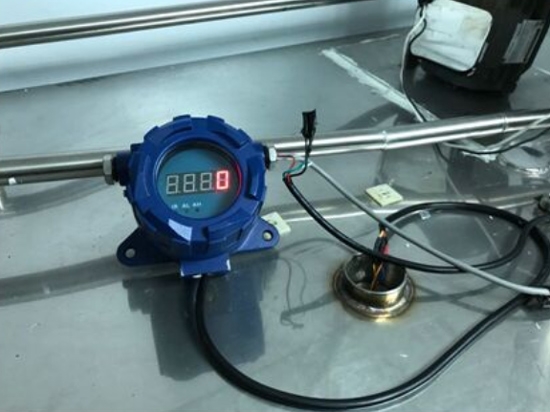Ozone gas, scientifically represented as O3, is a molecule composed of three oxygen atoms. It plays a crucial role in both the upper and lower layers of Earth's atmosphere, but its effects can vary significantly depending on its location.
Ozone in the Stratosphere
In the stratosphere, which extends roughly 15 to 35 kilometers above the Earth's surface, Ozone is concentrated in a region commonly known as the Ozone layer. This layer is vital for life on Earth because it absorbs the majority of the sun's harmful ultraviolet (UV) radiation. Without this protective layer, these UV rays would be much more intense at the surface, potentially causing severe damage to living organisms, including increased rates of skin cancer and cataracts in humans, and harming various ecosystems.
The formation of Ozone in the stratosphere involves a process called the Ozone-oxygen cycle. Ultraviolet light from the sun splits oxygen molecules (O₂) into individual oxygen atoms. These atoms then react with other oxygen molecules to form Ozone (O₃). This Ozone absorbs UV light, breaking down into oxygen molecules and atoms, which then reconstitute Ozone, continuing the cycle.
Ozone at Ground Level
Contrary to its protective role in the stratosphere, Ozone at ground level, or in the troposphere, can be detrimental. Ground-level Ozone is not emitted directly; instead, it forms through a photochemical reaction between Nitrogen Oxides (NOx) and Volatile Organic Compounds (VOCs) in the presence of sunlight. This type of Ozone is a significant component of smog and can lead to various health problems, particularly for those with respiratory conditions like asthma or chronic bronchitis.
Exposure to high levels of ground-level Ozone can cause a range of symptoms, including:
- Shortness of breath
- Coughing
- Throat irritation
- Worsening asthma symptoms
- Moreover, ground-level Ozone can also impact vegetation, reducing crop yields and forest growth, and can even damage materials like rubber and paint.
Dual Nature of Ozone
The dual nature of Ozone—protective in the stratosphere but harmful at ground level—highlights the complexity of atmospheric chemistry and its effects on the environment and health. Efforts to protect the Ozone layer and reduce ground-level Ozone pollution are crucial for maintaining a balance that supports life and minimizes harm.
How to Monitor and Detector Ozone (O3) Gas?
Monitoring Ozone levels is crucial for environmental and health reasons. High levels of Ozone in the lower atmosphere, particularly at ground level, can lead to respiratory problems, aggravate asthma, and contribute to other health issues. GasDog gas detectors or monitors typically can detect and measure Ozone concentrations in the air.
Portable Ozone Gas Detectors
These are handheld devices used for on-the-go Ozone monitoring. They are commonly used in various industries to ensure that Ozone levels remain within safe limits During different operations. Portable detectors are especially useful for workers who need to check Ozone levels in different locations quickly and easily.
Fixed Ozone Gas Detectors
These fixed detectors are installed in specific locations to provide continuous monitoring of Ozone levels. They are often used in industrial settings where Ozone is generated or used as part of the production process, such as in water treatment facilities, food processing, and chemical manufacturing.
GasDog also provides a professional multi-gas analyzer GD600-GAS, which can detect and analyze NO2 at the same time (0-10ppm), SO2 (0-10ppm), CO (0-20ppm), and O3 (0-10ppm) concentrations.

Difference Between Ozone and Oxygen
Oxygen (O2) is essential for life on Earth, supporting respiration in humans, animals, and plants. Ozone (O3), however, Ozone (O₃) is much more unstable than oxygen and is a strong oxidant and toxic gas. This means that Ozone can react with and break down other substances, which is why it has strong disinfectant properties. While oxygen gas is vital for survival, Ozone at ground level can be a dangerous pollutant.
Protecting the Ozone Layer and Reducing Pollution
Addressing Ozone-related issues involves both international agreements and local actions. The Montreal Protocol, an international treaty established in 1987, successfully phased out the production of many substances harmful to the Ozone layer, such as chlorofluorocarbons (CFCs). However, continued vigilance and action are necessary to ensure that the recovery of the Ozone layer progresses as planned.
To combat ground-level Ozone pollution, efforts focus on reducing emissions of NOx and VOCs. This includes improving fuel efficiency in vehicles, adopting cleaner industrial practices, and promoting the use of renewable energy sources.
Above all, Ozone gas is a fascinating and complex molecule with both beneficial and harmful effects depending on its atmospheric location. Understanding and managing its presence is essential for protecting both human health and the environment. Through continued international cooperation and local action, we can work towards a healthier and more balanced atmosphere.
